The problem
The construction industry is constantly under pressure. Apart from the obvious financial stresses, construction companies need to factor in customer satisfaction, time constraints, environmental considerations, changing technology, and keeping ahead of the competition as well as juggling a workforce that includes a multitude of trades. Delays are costly, frustrating and can have a disastrous impact on the project. Waiting for screed to dry can bring a project to a grinding halt, as construction ceases while the workforce is unable to access the area.
The solution
To speed up screed drying, temporary boiler hire tailored to the needs of each project will reduce delays to building work and keep the project on schedule. Speeding up the drying process requires specific expertise and should only be undertaken by an OFTEC approved, SafeContractor accredited company with experience and a good reputation, with the resources to invest in the most efficient and advanced technology available. Ideal Heat Solutions has an excellent reputation for providing temporary, bespoke heating solutions to the construction industry.
What is screed?
Screed is a compound added to a surface to create a level floor and bring it to the specified construction height. Screeds are usually made from pre-blended mortar mixed with either cement or anhydrous-based binders. Different screeds can be chosen to suit a variety of different uses/conditions.
Types of screed flooring
There are many types of screed available. It can be flowing; examples are Gyvlon, Supaflo and Truflow; traditional, granolithic or fast-set such as Mapei Topcem and K-screed. Flowing screeds are a good alternative if time is constrained but can be more costly. Traditional sand and cement screeds are more suited to domestic use and are the preferred choice for floors that will have ceramic tiles as the bond will be stronger than other screeds. Granolithic screeds are hard-wearing, aggregate based and used for industrial areas that will experience heavy traffic.
Traditional Screed Vs. Free Flowing Screed
| Feature | Traditional | Free Flowing |
| Depth | Deeper | Shallower |
| Cost | Usually More Economical | Usually Less Economical |
| Laying Time | Slower | Quicker |
Unbonded screed – Not bonded to a base but laid on an isolating layer such as PVC or polyethylene. The best reinforcing for unbonded screeds are polypropylene fibres rather than hex wire.
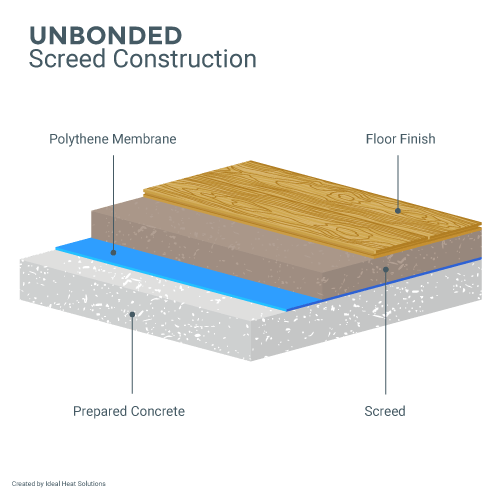
Floating Screed – Laid on a layer of thermal insulation such as expanded polystyrene and/or material for soundproofing.
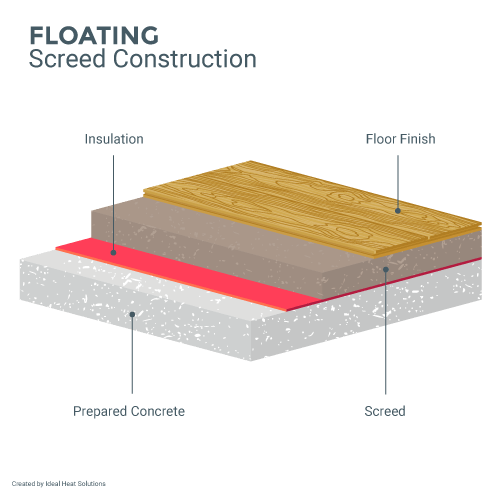
Bonded Screed – Laid on a supporting structure such as an underlying slab. Bonded using an adhesive such as PVA, SBR, epoxy resin or cement.
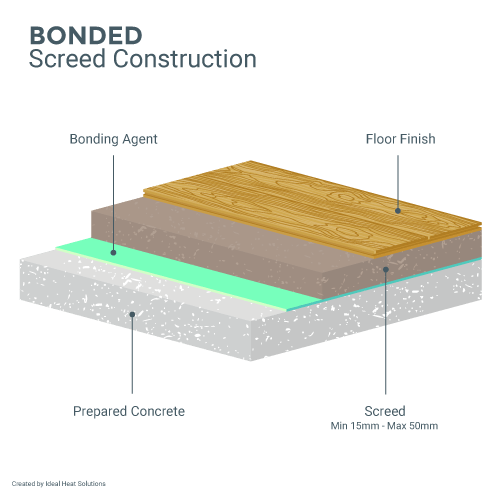
Heated Screed – Screed has an underfloor heating system incorporated within it comprised of elements of pipe work within a plastic or composite sleeve. The heat is provided by a boiler system.
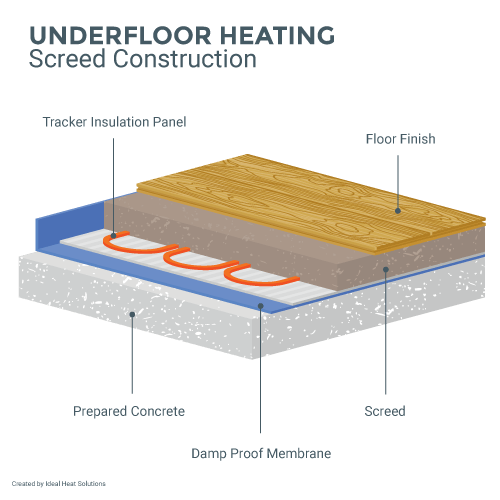
Screed Modifications/Additives
Hydraulic binder –Can be added to screeds with the aim of producing an early drying, high strength screed. An example is Mapei Topcem
Plasticiser – additive used to help reduce moisture levels leading to faster drying. For example Isocrete K-screed and Tarmac Truscreed.
Aluminium – Aluminium based cement is used to decrease the setting time. The advantages of faster setting need to be weighed up against the potential drawbacks, the quality is often compromised and they can be very expensive. Examples are Ardex Ardurapid and Isocrete screedfast.
Polypropylene fibres – For example in Truscreed, reinforcement used that helps control cracking and produce a more cohesive screed.
Polymers – Large quantities of PVA or SBR are added to create a viscous, sticky screed. This gives the screed chemical and water resistance properties. This also means the floor screed can be slightly thinner.
Recommended Depths for Liquid Floor Screed
Depths recommended:
| Type | Minimum Depth – Liquid screed |
| Fully Bonded | 25mm |
| Unbonded | 30mm |
| Over Insulation | 35mm |
| Over Insulation | 40mm |
| Over Underfloor Heating (UFH) | 30mm from top of pipes |
Screed Setting and Drying Times
| Product | Typical Setting Time | Typical Drying Time | Typical Strength |
| Traditional screed (Premixed 1:4) | 24 – 48 hours | 1mm per day | 27 – 30N |
| Fast – set screed (1:5) | 1 -2 hours | 10 – 15mm per day | 22 – 27N |
| K-screed (1:4) | 6 – 12 hours | 25mm per week | 30N+ |
| Mapei Topcem (1:6) Including Tarmac Cem5 | 6 – 24 hours | 5 days | 27 – 30N |
| Flowing screeds – Gyvlon / Supaflo etc | 6 – 48 hours | 1mm per day | 25 – 27N |
| Granolithic screeds | 12 – 28 hours | 2mm per day | 40N+ |
| Tarmac Truscreed (1:4) | 24 – 48 hours | 25mm per week | 30N+ |
It is essential that the right conditions are provided from the start to create the optimal environment for screed drying. The ideal environment needs to be warm and well-ventilated; obviously conditions vary and this will affect drying time.
Gyvlon is a free flow screed, often used with underfloor heating. Dependent upon conditions, Gyvlon screed up to a thickness of 40mm will dry at an average rate of 1mm per day. For thicknesses over 40mm the rate decreases to ½ mm per day. Force drying of Gyvlon screed is possible 7 days after insulation. A lower flow temperature of 20-25°C for a minimum of three days can be raised in 5°C increments for the next seven days to a maximum water temperature of 55°C. Return the temperature to ambient temperature again using a reverse process, in 5°C increments.
Ideal Heat Solutions provides temporary boiler hire using reliable brands such as Viessmann, Riello and the Trend 963 Supervisor boiler monitoring system, which allows the screed drying process to be carried out and managed accurately and effectively.
After it has been dried, an approved test method should be used to assess residual moisture levels before flooring can be laid. Most screed floors reach their final (maximum) strength at 28 days after being laid
Boiler hire for underfloor heating
An experienced, SafeContractor-accredited company will be able to guide you, as there are complications to be considered. OFTEC-approved engineers will have the necessary skill to overcome technical difficulties and provide a heating solution suitable for the exact situation. Installation of a temporary boiler should be relatively quick, keeping disruption to a minimum. Ideal Heat Solutions advises that a 22kW boiler is sufficient for screed drying.
Treating a screed floor before laying flooring
Any screed floor must be properly cured before the addition of flooring. Traditional screed floors will take around 7 days per centimetre of thickness in optimal conditions. This could incur drying times of over a month, but it can be reduced in a number of ways. Hiring a temporary boiler from an experienced boiler hire SafeContractor-accredited company can speed up the process effectively.
Before tiling, a screed floor must be checked for residual moisture using appropriate equipment. If the screed is not completely dry the moisture will prevent bonding with the tile adhesive. For any flooring that uses adhesive we would recommend that the screed is lightly sanded then primed to provide a barrier between the gypsum-based screed and the cement-based adhesive.
Screed protection – To preserve the quality of your screed floor, protect it from damage by regulating/preventing site traffic and/or installing screed protectors. The recommendation by British Standards is to protect the newly laid screed as soon as possible and leave the protection there until the final finish is applied.
Time before walking on a screed floor
‘Walk on time’ refers to the time the floor is suitable for light/low impact foot traffic. Most screeds recommend 24 – 48 hours. Some more modern screed floors will have a shorter walk on time, as little as 12 hours. Refer to the manufacturer’s guidelines.
Heavier/normal traffic can be resumed 5-7 days after the screed floor is laid. Initially it is wise to take care when using heavy weights and high impact.
Problems associated with floor screeds
The process of drying, by definition, entails water leaving a substance. If this process is carried out incorrectly problems can occur with your screed:
- Cracking – The potential for this to occur increases with artificial drying, hence the importance of ensuring artificial drying of screeds is carried out by experienced professionals.
- Curling – Can also be caused by artificial drying; curling is more likely to occur with thinner screeds as they dry quicker. It tends to occur at internal angles and day-joints.
- Shrinkage – The result of the volume decreasing as water is removed. Some floor screeds such as Truscreed and K-screed have water-reducing properties in the form of super-plasticizers which will reduce the occurrence of shrinkage and cracking.
Myths debunked
- ‘A free flowing screed will encase my underfloor heating pipes whereas a traditional screed won’t.’
This isn’t necessarily the case. Traditional screeds can also encase pipes but as the heat travels vertically this isn’t actually important and will make no difference to performance of an underfloor heating system. - ‘Artificially speeding up the drying time will cause cracks and curling in my screed flooring.’ This can happen if the process isn’t carried out correctly. Artificial screed drying should be carried out by experienced technicians who are OFTEC-approved.
- ‘Temporary boiler hire will involve an old boiler that is unsuitable for the job’
It is important to have an efficient boiler that is suitable for the requirements of each situation. The engineers should assess the specific needs of each project, and the industrial boiler provided to accelerate the drying of the screed should be the appropriate size and power rating. Ideal Heat Solutions has a programme of continuous investment in industry-leading equipment and training; our reputation as a leading provider of temporary boiler hire depends on it.
5 Reasons you should speed up the screed drying process
- Building work can suffer costly delays while drying time elapses.
- Work can continue faster
- Floors can be laid in a quicker time-frame
- Time pressure is lifted off you and the work-force
- The work schedule remains on track
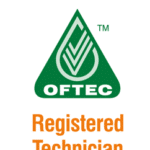
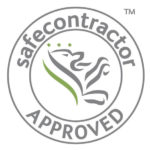
How drying screed will benefit your business
✓ Meeting deadlines
✓ Fewer delays
✓ Work continues for all trades
✓ Reduced cost